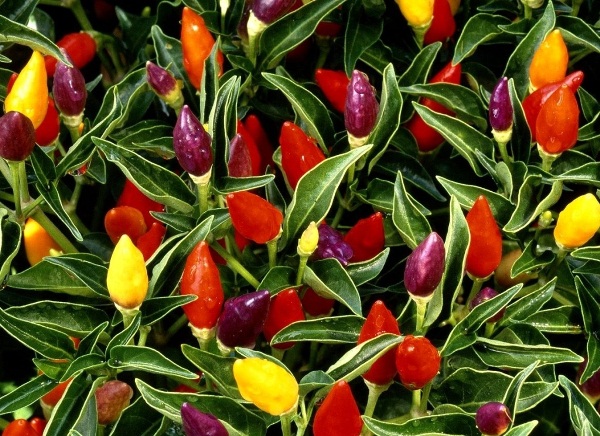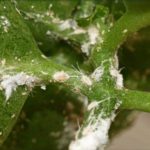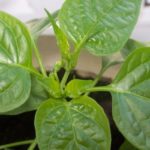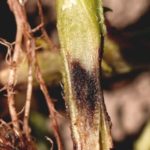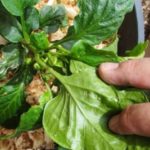With the onset of cold weather, we begin to miss the rich colors of nature and the rustling of leaves in the wind. Some gardeners in this case grow decorative pepper at home. The green hat dotted with multicolored fruits on the windowsill contrasts with the winter landscape, great uplifting.
Table of contents
What is a decorative pepper?
Kapsikum is the botanical name for pepper. It is also called Pepper or Capsicum. This unpretentious, annuals and perennial shrubs and shrubs family Solanaceae. He comes from the subtropics of Central America.
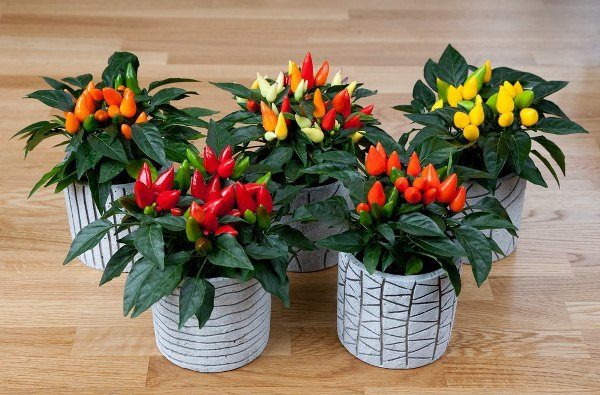
Kapsikum is grown worldwide as an ornamental or vegetable crop. Varieties are divided into sweet and bitter. The latter contain an increased amount of capsacin alkaloid. The Aztecs used this substance as a chemical weapon. It gives the pepper a burning taste. The highest amount of capsacin is found in fruits, especially in cayenne pepper.
Decorative called compact, branched varieties height in 20-40 cm, with dense foliage and abundance of fruits. Grow them in indoor conditions, in pots. In the summer it is not a sin to take it out to the balcony or to the garden, or to plant it in the open ground. Before the onset of cold weather, pepper can be transplanted back into the pot.
Can I have a decorative pepper?
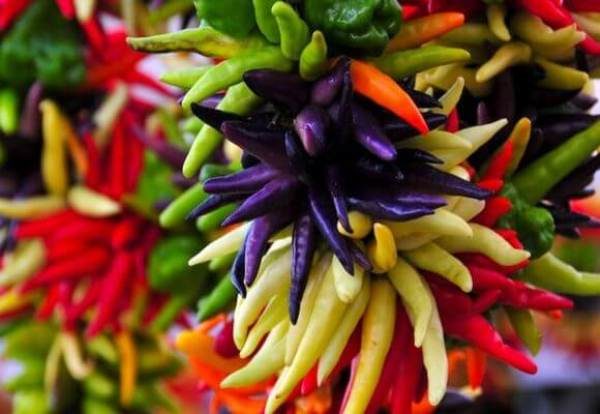
The fruit of Kapsikum is a false false hollow seed capsule, often eaten as a spice. The word box in Latin means capsa, hence the Latin name of the plant - Capsicum. The shape of the fruit, its color, size and its position on the plant may differ depending on the variety. The fruits of some ornamental varieties may be inedible. The plant, greens, roots of the plant are toxic, as in all solanaceous.
Most popular varieties
Many varieties have been developed, the most popular of which are:
Tabasco
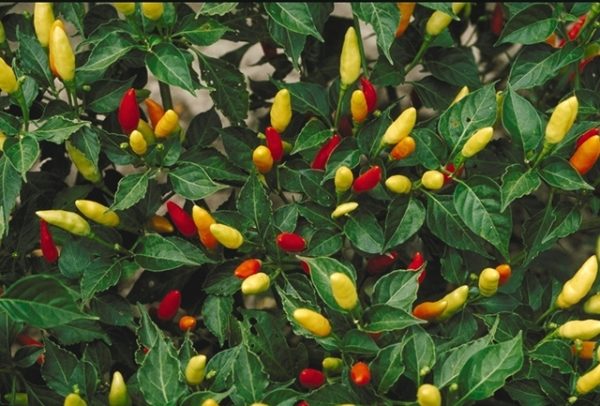
Classic peppers. Serves as the main ingredient for the famous sauce. Fruits about long 5 cm, they are collected in bunches and stick up. Their color varies from orange to red.
Tepin
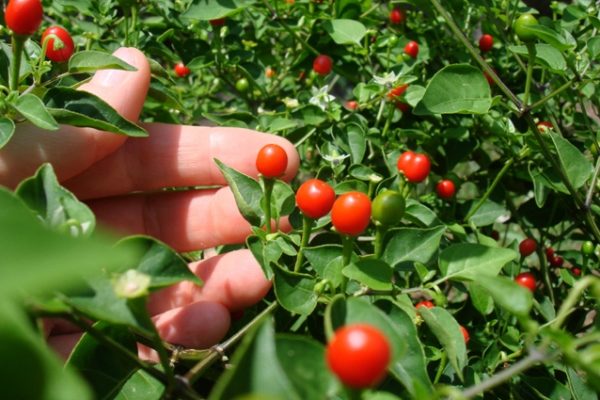
Wild variety with especially stinging red fruits, round shape, the size of a bean. Used by cowboys as a stimulant. Hence the slang term Cowboy berry.
Troll
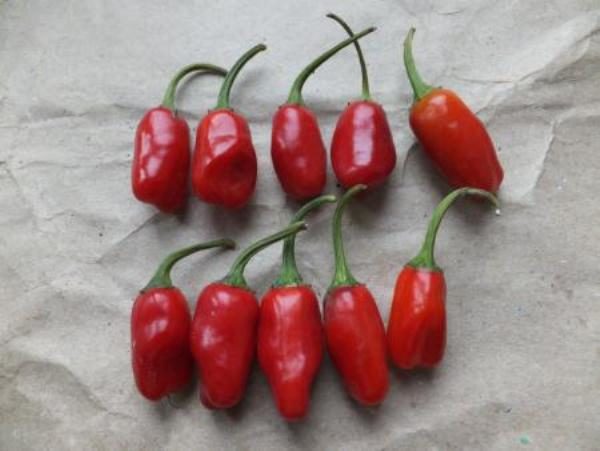
Abundantly fruiting, spreading shrub tall 30-40 see with motley leaves. When ripe, the fruits change color from green to purple and red.
Black Pearl
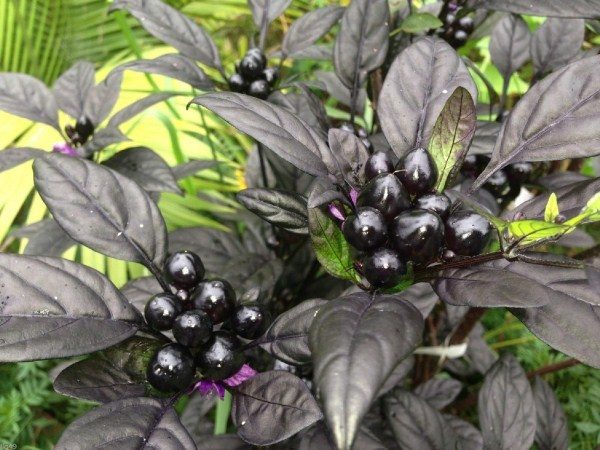
Unusual variety. As you grow up the plant changes its color from green to almost black. Fruits are also black, spherical, small in size, redden as they ripen.
Jellyfish
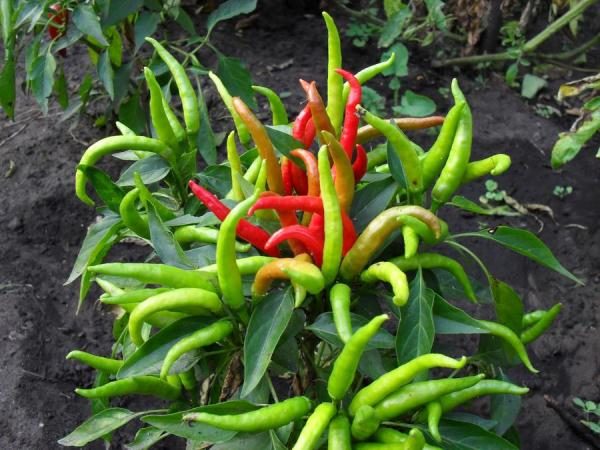
Lovely pepper It is covered with elongated, moderately sharp fruit. They stick up, resembling the tentacles of a jellyfish.
Salute
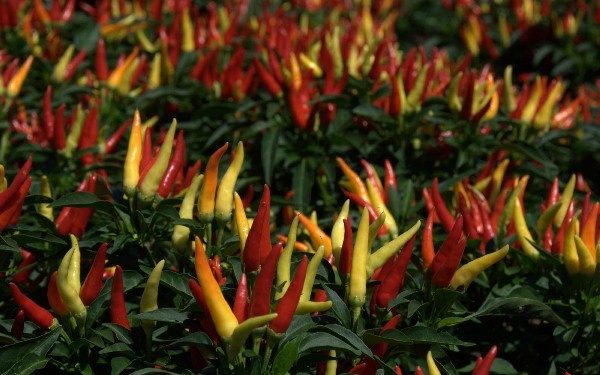
The tiniest shrub variety. Great for indoor growing at home. Bush in height reaches 15-20 cm. Orange peppers.
Goldfinder
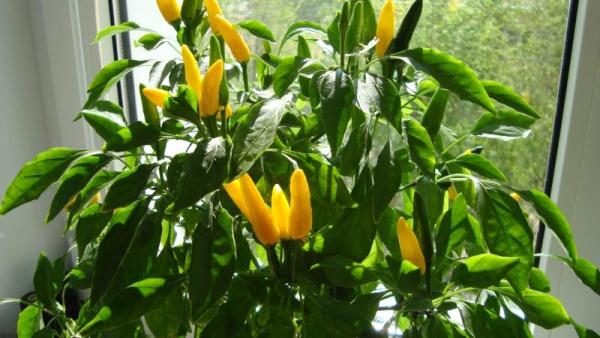
Inedible pepper, grown for interior decoration. Fruits are yellow.
Landing rules at home
For peppers, there are general rules for planting. It is propagated by seeds, which are taken from ripe fruits. You can sow them at any time of the year. Seeds are pre-soaked for several hours in water. For germination, you can use a damp cloth or gauze. With the advent of roots, seeds are placed in the ground to a depth of 0.5-1 cm. Also, seeds can be planted immediately after soaking.
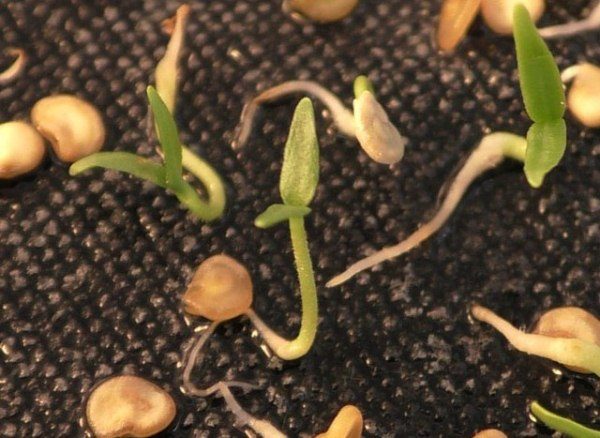
The substrate should be loose, breathable and nutritious, have a neutral reaction.A mix for Saintpaulia or on the basis of peat with sand will fit. Drainage required. For successful germination, the soil must be moist all the time, but not wet.
Air temperature is about 20-25 ° С. On a cold window-sill, place a wooden plank under the pot; thick logs will do. With the emergence of shoots, at the time with a short day of light, it is highly desirable to provide additional lighting with fluorescent or phytolamps. When sprouts reach height 5-6 cm, they can be seated in separate pots of appropriate sizes.
If this is not done, the plants can grow weak and produce less fruit. The film can no longer be worn. As they grow, peppers roll into larger pots. In spring and summer, they can be planted in open ground, and after rooting, pinned. This is done for better branching bush.
Plant Care and Growing
In order for the plant to develop properly, to be healthy, to please the eye with its appearance and abundance of fruits, it will need a little care. It consists in creating and maintaining favorable conditions.
- Lighting. Kapsikum prefers bright, diffused light. It is necessary for setting fruit. Perfectly fit western or eastern windows. On the south side, on sunny days from 11 to 16 hours, or if the plant grows outside, provide shading. On the north side, as well as in winter, light exposure is required. Otherwise, the plant can stretch out and lose its decorative effect.

- Temperature. Moderate, during the growing season 15-25 ° C. In winter, with a lack of lighting, preferably about 15 ° C to slow growth. It can withstand a decrease to 10 ° C. Afraid of drafts, in the heat drawn out.
- Watering. In the summer and during the flowering period, it is necessary to water frequently, 3-4 times a week. If the plant is standing in the sun, then more often. The soil should not dry out. During the ripening of the fruits, the soil is slightly reduced. If cool (10-15 ° C), watered once a week.
- Humidity. It is undemanding to humidity. Spray 1-2 times a week, which after flowering promotes the formation of fruits.
- Top dressing. From April to September, 1 time in 2 weeks with liquid, complex fertilizers. After the fruit ovary, feeding is stopped.
Stimulation of flowering and fruiting
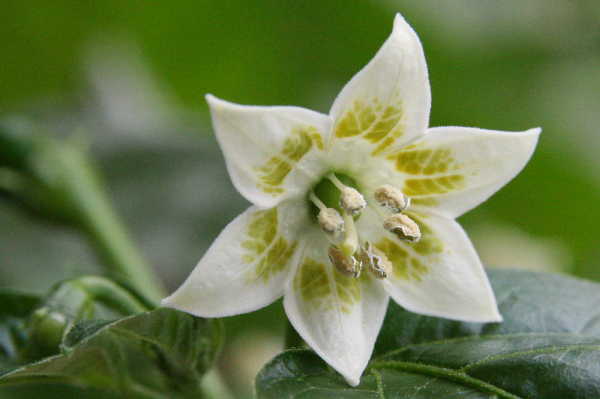
A healthy, strong plant blooms in summer with whitish, inconspicuous flowers. Stimulate flowering can hormonal drugs, growth regulators. Fruits are tied without cross-pollination, but transferring pollen with a soft brush from one flower to another will increase the number of ovaries. After the ovary, shoots pinch to half the length. It enhances fruiting.
Diseases and pests control
Pepper is unpretentious, but with the wrong care even with him difficulties may arise. A weakened plant is affected by spider mites, aphids, powdery mealybugs, whitefly, false powdery mildew, and black leg. Insecticides are used to fight insects. From diseases protect fungicides.
- Mealybug
- Signs of aphids
- Blackleg
- Spider mite
If you bring the plant from the street into the room, due to a sudden change in lighting, it may begin to shed its leaves. What also happens from hot, dry air or over-watering. The leaves may become shallow, pale, the plant does not bloom from lack of nutrition.
Conclusion
In general, Kapsikum is an amazing plant, wholesome and beautiful in its own way. The Mexican requires minimal care, but to observe its metamorphosis is interesting and informative. Under favorable conditions, he will delight you with himself up to 5 years.
